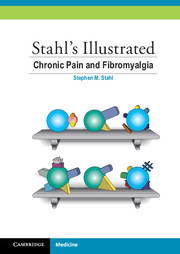Chapter 2 - Neurobiology of Pain
Published online by Cambridge University Press: 19 October 2021
Summary
Chapter 2 presents the basic neurobiology of pain. The human experience of pain is a product of nociception plus higher brain activity. Most neuropathic pain disorders are thought to derive from some combination of central and peripheral sensitization, which are abnormal changes in the brain structures and connections that process painful information. These disorders are generally thought to be progressive, so identifying them early greatly enhances the likelihood of a positive outcome. This chapter guides the reader through the major biological players of pain processing, pain pathways, categorical types of painful experiences, and the processes thought to take place during the development of neuropathic pain disorders.
Although much of the neurobiology of specific pain disorders is yet unknown, a great deal is understood through mechanisms of different types of pain and via mechanisms of effective drugs. Because there is no single brain region for the expression of pain, treatment can seem incredibly complex. However, understanding the mechanisms of some common types of pain can aid in targeting areas of the brain specific to that disorder. In order to make these connections, this chapter continually refers to other chapters in this book with reference to particular disorders and the drugs that may be effective to treat them.
Dorsal horn neurons of the spinothalamic tract project to the thalamus. A second neuron projects to the primary somatosensory cortex. This pathway, termed the discriminatory pathway, carries information about the intensity and location of the painful stimuli. Another pathway of dorsal horn neurons ascends in the spinobulbar tract, projecting to the brainstem and on to both the thalamus and limbic structures. This pathway is termed the emotional/motivational pathway.
The human sensation of “pain” is only experienced when both the thalamocortical (sensory/discriminatory) AND the limbic (emotional/motivational) pathways combine in the brain. Specifically, information from these pathways is integrated in the periaqueductal gray (see Figures 2.27-2.28 and Table 2.3).
This normal inflammatory process has in the past been considered largely separate from neuropathic pain. However, it turns out that this process may have much to do with the development of common pain disorders. Although pain disorders can occur in the presence of tissue damage, where inflammation results from normal immuneresponse and increased blood flow to the area, they can also occur in the absence of tissue damage, such as in the case of immune-response to degenerating neurons (see Figures 2.19-2.20).
- Type
- Chapter
- Information
- Stahl's Illustrated Chronic Pain and Fibromyalgia , pp. 11 - 46Publisher: Cambridge University PressPrint publication year: 2009

